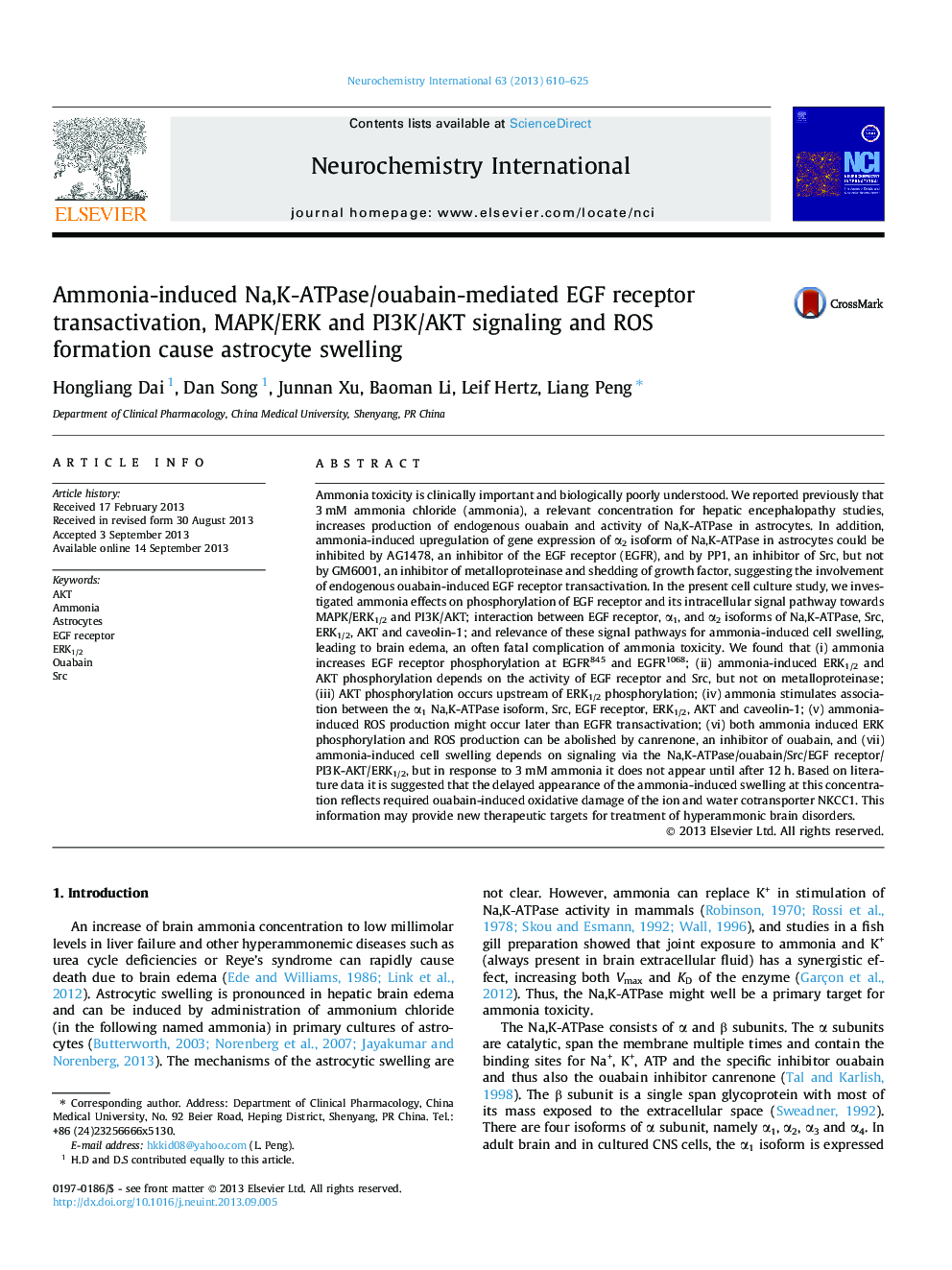| کد مقاله | کد نشریه | سال انتشار | مقاله انگلیسی | نسخه تمام متن |
|---|---|---|---|---|
| 2200627 | 1099955 | 2013 | 16 صفحه PDF | دانلود رایگان |

• A ouabain/Na,K-ATPase pathway triggers ammonia-induced astrocyte swelling.
• Ammonia-induced EGF receptor transactivation phosphorylates EGFR845 and EGFR1068.
• PI3K/AKT is activated upstream of MAPK/ERK1/2 in the transactivation pathway.
• A ouabain antagonist prevents ammonia-induced ERK, ROS and swelling effects.
Ammonia toxicity is clinically important and biologically poorly understood. We reported previously that 3 mM ammonia chloride (ammonia), a relevant concentration for hepatic encephalopathy studies, increases production of endogenous ouabain and activity of Na,K-ATPase in astrocytes. In addition, ammonia-induced upregulation of gene expression of α2 isoform of Na,K-ATPase in astrocytes could be inhibited by AG1478, an inhibitor of the EGF receptor (EGFR), and by PP1, an inhibitor of Src, but not by GM6001, an inhibitor of metalloproteinase and shedding of growth factor, suggesting the involvement of endogenous ouabain-induced EGF receptor transactivation. In the present cell culture study, we investigated ammonia effects on phosphorylation of EGF receptor and its intracellular signal pathway towards MAPK/ERK1/2 and PI3K/AKT; interaction between EGF receptor, α1, and α2 isoforms of Na,K-ATPase, Src, ERK1/2, AKT and caveolin-1; and relevance of these signal pathways for ammonia-induced cell swelling, leading to brain edema, an often fatal complication of ammonia toxicity. We found that (i) ammonia increases EGF receptor phosphorylation at EGFR845 and EGFR1068; (ii) ammonia-induced ERK1/2 and AKT phosphorylation depends on the activity of EGF receptor and Src, but not on metalloproteinase; (iii) AKT phosphorylation occurs upstream of ERK1/2 phosphorylation; (iv) ammonia stimulates association between the α1 Na,K-ATPase isoform, Src, EGF receptor, ERK1/2, AKT and caveolin-1; (v) ammonia-induced ROS production might occur later than EGFR transactivation; (vi) both ammonia induced ERK phosphorylation and ROS production can be abolished by canrenone, an inhibitor of ouabain, and (vii) ammonia-induced cell swelling depends on signaling via the Na,K-ATPase/ouabain/Src/EGF receptor/PI3K-AKT/ERK1/2, but in response to 3 mM ammonia it does not appear until after 12 h. Based on literature data it is suggested that the delayed appearance of the ammonia-induced swelling at this concentration reflects required ouabain-induced oxidative damage of the ion and water cotransporter NKCC1. This information may provide new therapeutic targets for treatment of hyperammonic brain disorders.
Journal: Neurochemistry International - Volume 63, Issue 6, November 2013, Pages 610–625